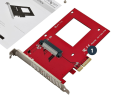The entire IT world has been running on file systems for decades without the advanced data resilience features that ZFS offers, while maintaining excellent reliability (otherwise we would have these problems on a daily basis).
So personally I see two possibilities:
- ZFS is so unreliable that it cannot work properly on hardware solutions (on which every other file systems works fine)
- The recommendation is simply derived from an exaggerated interpretation of what is actually a very interesting feature, but not so critical in its absence
I absolutely lean towards the second hypothesis, and this is precisely why I am trying to understand in depth this situation, since
I have not yet found a single documented cases of catastrophic ZFS data corruption on
enterprise-grade HW Raid solutions.
Just to be clear: I have no interest in necessarily being right.

But if I'm wrong, I would like to be corrected with
real data in hand, because it can be useful not only to me but also to anyone else reading.
Right now it seems like a religious discussion more than a technical discussion. "Either you believe what is written, or there is no point in talking about it."
I think that the technical world can only benefit from discussions addressed on a technical level. We're almost all technicians here, aren't we?


